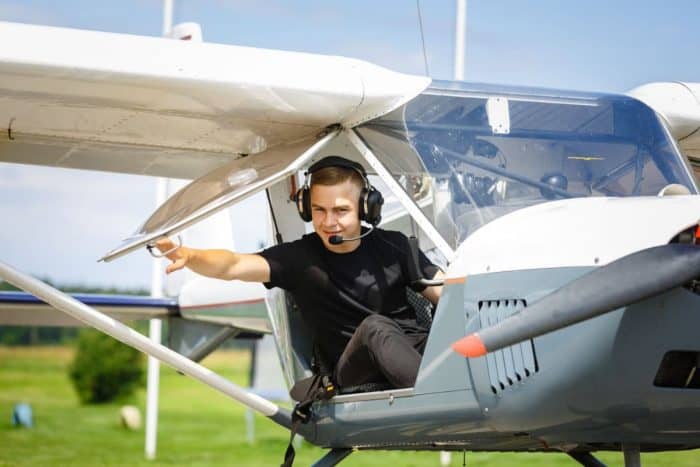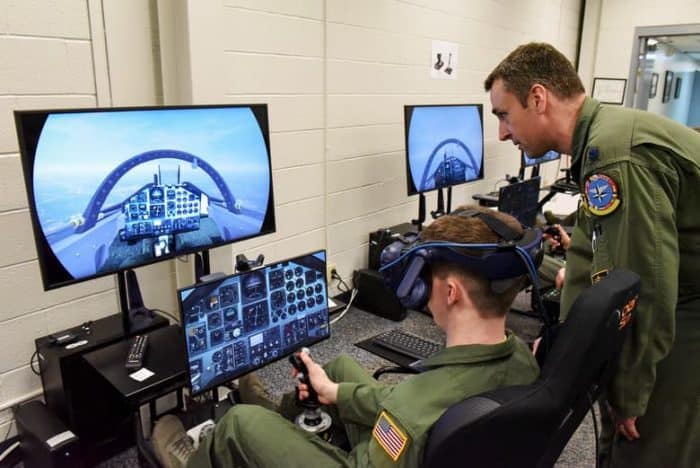At some point in their lives, a lot of people have daydreamed about becoming pilots, and there is little wonder why. Few things make you feel freer than being at the helm of a gigantic plane as it flies through the air and experiencing all that this offers. What a lot of people don’t know is that there are numerous types of flight schools and the good news is that, thanks to these, there is truly something for everyone out there.
Table of Contents
Commercial pilots have a median salary of roughly $92,000 but military pilots are paid according to their ranks. To become a pilot, you must have an associate or bachelor’s degree. It is predicted that the need for pilots will increase by roughly 10% in the year 2020.
As with other types of school, a good flight school varies when it comes to cost; it can cost anywhere from $3000 to more than $30,000 even though the money is well worth what you get in return.

Fortunately, schools that teach people how to fly airplanes can be short or long, depending on the type of plane you wish to fly, and they are usually specific to a type of plane.
When your goal is to become a pilot, you can aim for a commercial, airline, or corporate pilot’s license. It is also good to keep in mind that not all of these schools are the same.
Most schools teach “ab initio,” or “from the beginning,” which is very comprehensive training. However, there are also local schools that will train you for all types of missions, including training for those people who simply want to fly for fun.
Related: What is Pilot Recurrency Training?

1. Independent Certificated Flight Instruction
Usually accommodated by your local airport, this type of flight school usually offers both flight and ground instruction via per-hour fees. More often than not, these certified flight instructors (CFIs) do not use their own airplanes to teach prospective pilots how to fly.
Instead, most of the students will rent a plane from a local fixed base operator, or FBO, which is found at nearly all airports throughout the country.
This type of training is mostly utilized by people who will use their pilot’s licenses for personal business use or just as a hobby because they want to fly planes for fun.
The pros of this type of school include one-on-one training, flexible scheduling, local knowledge, and costs that are usually lower than other types of flight schools.
On the other hand, the disadvantages include limited access to both the facility and the aircraft, the possibility of having to hire other instructors for more advanced lessons and licenses, and at least occasional downtime due to maintenance and other issues.
2. Local Flight Schools
Local flight schools usually offer either Private Pilot or Sport Pilot programs while others provide even more. These schools often have a few planes available to rent and to train in.
Many also have the needed facilities to train in all aspects of flying, including flight planning rooms, basic classrooms, and some small flight simulators. If you want to fly for fun or even as a profession, local flight schools should be considered.

With local schools, students can access many types of aircraft and can train close to home. These schools also tend to be inexpensive.
On the other hand, maintenance issues can require downtime during your training and the training itself could be limited if you’re there for any type of advanced training and knowledge.
3. Large Universities or Academies
If you intend for professional piloting to be your career, you’ll want to attend a large academy or university because they are specifically intended for people whose goal is to take the job seriously.
If you only want a pilot’s license because you think that flying a plane will be fun, these schools may not be what you’re looking for.
Although the costs can be high and the training isn’t as personalized as the smaller schools, there are many advantages to this type of school.
These include state-of-the-art aircraft and training facilities and even access to job interviews near the end.

When it comes to larger schools for prospective pilots, you also get very little, if any, downtime due to maintenance issues, excellent simulators, and the possibility of becoming an instructor after you graduate.
This is a top-notch education that fully prepares you to be a commercial airline pilot so the money you spend on that education will be well worth it.
4. Part 61 and Part 141 Flight Training
Many times, you’ll be asked about Part 61 and Part 141 training and they both have to do with federal regulations that have minimum requirements to train future pilots.
Basically, all FAA-approved instructors can train a student under Part 61 regulations whether they are associated with an FAA-approved school or not.
Part 141 refers to the schools themselves. To train under Part 141 regulations, the instructor has to be associated with an FAA-approved school.
Both of these options, however, will prepare a student for his or her future career as an airline pilot.
There are also many types of pilot licenses, which informs the type of school that you’ll need to be enrolled in, and they include the following:
References ▾
Related Posts












